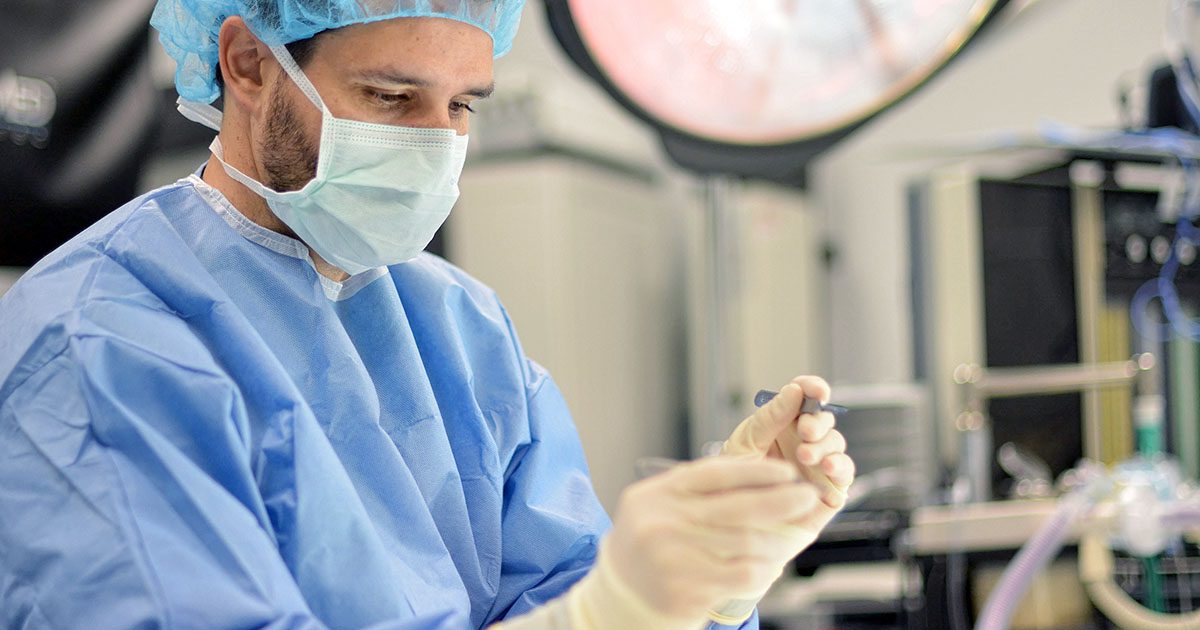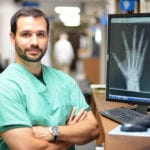
ORIF stands for open reduction and internal fixation. ORIF wrist surgery, or open surgery for wrist fractures, is a technique used to reposition, stabilize and heal a severely broken wrist. Internal fixation means hardware such as pins, screws, or wires is used to hold the broken bones together. This most often occurs in a distal radius fracture; fractures involving the lower portion of the radius, the larger bone of the forearm.
What does the hardware do?
The goal of the hardware is to keep the bones together, while they mend themselves. This process is referred to as union. A good analogy is thinking about how cement works to support your mailbox or basketball goal in the ground. You dig the hole, put the post in, fill with cement, and then use something to support the post while your cement hardens. Once cement has hardened, those supports are removed. That’s essentially what the plates, screws, and other hardware do, they hold things together while the bone heals. Once the bone has healed, or fully united, the hardware becomes unnecessary. The hardware is harmless, and is typically left in place to avoid an additional, unnecessary surgery.
How is an ORIF procedure performed?
ORIF wrist surgery requires an incision to be made on the palm side of the forearm and wrist to access the site of the injury. Dr. Donnelly properly aligns the bones (open reduction) and may use a combination of plats, screws or wires (internal fixation) to secure the bones in place. The incision is then closed with sutures using a technique that will limit scarring.
The entire procedure typically takes 30-90 minutes, depending on the severity of the fracture, and is performed under either general anesthesia or regional anesthesia with sedation. In most cases, ORIF wrist surgery is an outpatient surgery, so you can go home the same day.
One of the added benefits of internal fixation is that long term immobilization is not required. Patients will need to wear a splint that extends from the mid forearm to the palm to keep the fracture stable and aid in healing during the first week or so after surgery, but then a removable brace is often all that is required until the bone heals or unites.
What is the recovery time?
Full recovery and return to unrestricted activity following ORIF wrist surgery usually takes 8-10 weeks.
For the first week, the goal is to control swelling and pain. The patient will need to keep the wrist elevated and iced, moving the fingers regularly to avoid stiffness.
In about 1-2 weeks, Dr. Donnelly will inspect the injury and usually remove the sutures. The wrist will be placed in a removable splint, and the patient may begin moving the wrist slightly at this time. It should not be used for lifting or gripping. Hand therapy may also begin if needed.
The brace will usually come off at 4-6 weeks, and more activity will be allowed at that time. The bone is usually fully healed in 8-10 weeks, however soft tissues and ligaments may still have some discomfort for up to six months.
Does my fracture require ORIF wrist surgery?
Open surgery for wrist fractures is often required for displaced fractures. This allows better alignment of the fracture and early motion of the wrist as rigid casts are seldom needed. The wrist is the foundation for the hand, and as such, poor alignment of wrist fractures can lead to continued pain, arthritis, finger stiffness and compromised hand function.
Concerned about a fractured wrist?
Are you or someone you care about concerned they may have a serious fracture that may require ORIF wrist surgery? A broken wrist left untreated can lead to serious, long-term disfunction. A serious wrist injury should always be evaluation by a hand, wrist and elbow specialist. Contact Dr. Donnelly’s office today to schedule an appointment.
About Dr. Brandon P. Donnelly, MD
 Dr. Brandon P. Donnelly is a board certified orthopedic surgeon with Pontchartrain Orthopedics & Sports Medicine. Dr. Donnelly completed his hand and microsurgery fellowship at the prestigious Philadelphia Hand to Shoulder Center. Dr. Donnelly treats all ages of patients in the greater New Orleans area for hand, wrist, and elbow conditions.
Dr. Brandon P. Donnelly is a board certified orthopedic surgeon with Pontchartrain Orthopedics & Sports Medicine. Dr. Donnelly completed his hand and microsurgery fellowship at the prestigious Philadelphia Hand to Shoulder Center. Dr. Donnelly treats all ages of patients in the greater New Orleans area for hand, wrist, and elbow conditions.
This site is not intended to and does not provide medical advice, professional diagnosis, opinion, treatment or services to you or to any other individual. Through this website and links to other websites, Brandon P. Donnelly, MD provides general information for educational purposes only. The content provided in this website and links, is not a substitute for medical care or treatment. You should not use this information in place of a consultation or the advice of your healthcare provider. Brandon P. Donnelly, MD is not liable or responsible for any advice, course of treatment, diagnosis or any other information, services or product you obtain through this site.

